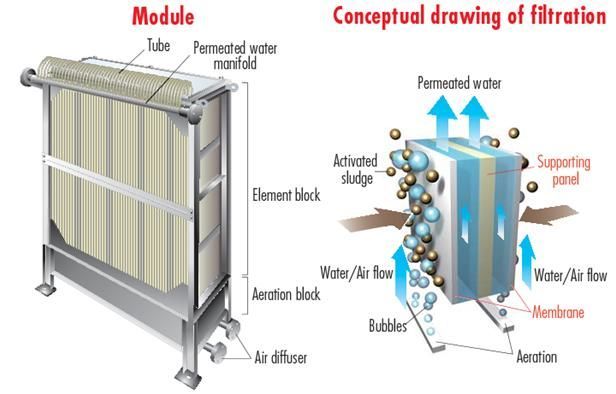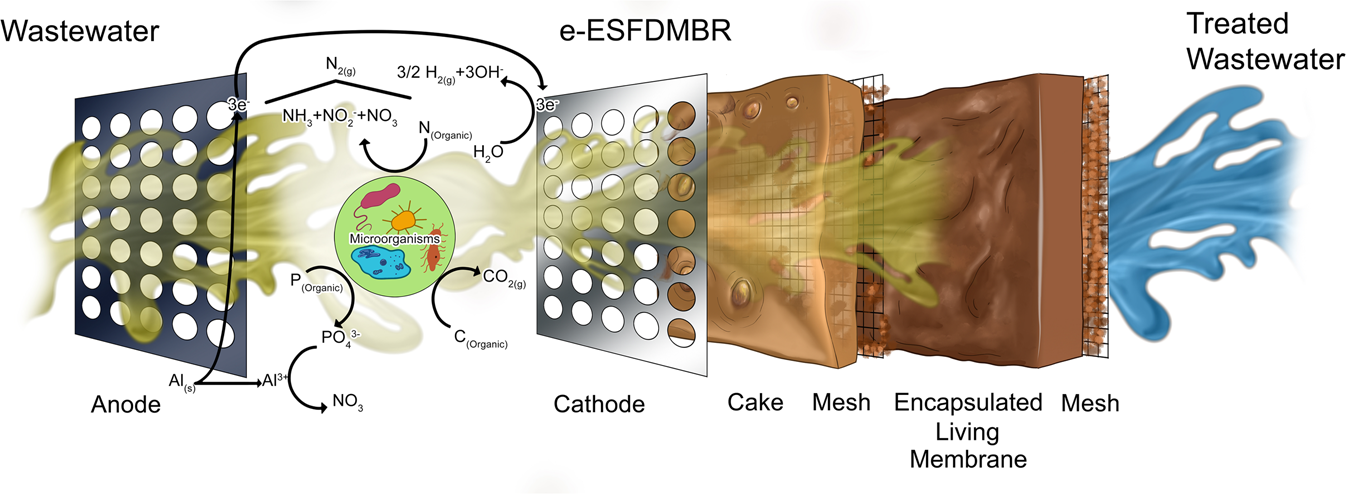How Membrane Bioreactor Contributes to the Reduction of Energy Consumption in Water Treatment
How Membrane Bioreactor Contributes to the Reduction of Energy Consumption in Water Treatment
Blog Article
Membrane Bioreactors Discussed: Reliable Solutions for Clean Water
Membrane bioreactors (MBRs) have actually arised as an advanced solution for addressing journalism challenges of wastewater therapy. By incorporating biological processes with innovative membrane layer filtration, MBRs not only boost the high quality of treated water however additionally reduce the spatial requirements of treatment facilities. As ecological worries magnify, the role of MBR innovation in advertising lasting water monitoring comes to be increasingly significant. The complexities of their operation, benefits, and possible applications merit a closer evaluation to fully understand their effect on the future of water therapy.

What Are Membrane Bioreactors?
Membrane bioreactors (MBRs) are innovative wastewater therapy systems that incorporate organic deterioration processes with membrane layer filtering innovation. This combination allows for the reliable elimination of pollutants from water, making MBRs a preferred selection in different applications, including municipal wastewater therapy and industrial effluent monitoring.

Among the essential advantages of MBRs is their capability to create premium effluent, frequently suitable for reuse in watering or industrial procedures. Additionally, MBRs call for a smaller impact compared to conventional therapy systems, making them suitable for urban setups where space might be restricted.
Moreover, MBRs can successfully handle differing influent tons and are much less susceptible to the impacts of toxic shocks. These features add to their growing appeal as a sustainable remedy for dealing with the boosting need for clean water while decreasing environmental effects.
Exactly How Membrane Layer Bioreactors Job
While the procedure of membrane layer bioreactors (MBRs) may appear complex, it essentially focuses on the harmony in between biological procedures and membrane layer purification. MBRs incorporate a biological therapy process, commonly turned on sludge, with a membrane layer splitting up device to deal with wastewater effectively.
In an MBR system, wastewater is initial presented right into a bioreactor where bacteria degrade raw material and other contaminants. The biological activity decreases the focus of contaminants while advertising the development of biomass. Following this biological therapy, the blended alcohol undergoes membrane layer purification, which can be microfiltration or ultrafiltration, depending on the desired effluent quality.
The membranes serve as a physical barrier, enabling water and little solutes to pass while maintaining put on hold solids and bigger particles. This makes it possible for the system to keep a high focus of biomass within the reactor, enhancing the treatment efficiency.
Furthermore, the continuous splitting up of treated water from the biomass helps with a compact design and minimizes the footprint of the treatment center. In general, the combination of biological degradation and membrane layer purification in MBRs causes reliable and trusted wastewater treatment, making certain high-grade effluent appropriate for various applications.
Advantages of MBR Innovation
One of the vital advantages of membrane layer bioreactor (MBR) modern technology is its capability to produce premium effluent with a significantly reduced impact compared to conventional wastewater therapy techniques. MBR systems effectively incorporate organic therapy and membrane filtering, resulting in remarkable removal of impurities, including suspended solids, microorganisms, and natural matter. This capacity brings about effluent that usually satisfies or goes beyond strict governing criteria for reuse and discharge.
In addition, MBR innovation enables greater biomass focus, which enhances the therapy effectiveness and minimizes the required reactor quantity. This small layout is particularly valuable in metropolitan locations where room is limited. The operational versatility of MBR systems also indicates they can adjust to varying influent top qualities and flow rates, making them ideal for a vast array of applications.
Furthermore, the lowered sludge manufacturing associated with MBR procedures contributes to reduce functional and upkeep prices. The membranes act as a physical obstacle, site web minimizing the risk of obstructing and enabling longer operational periods between cleaning. Generally, the benefits of MBR modern technology make it an eye-catching solution for lasting wastewater therapy, attending to both ecological concerns and the need for efficient resource monitoring.
Applications of Membrane Bioreactors
With their versatility and efficiency, membrane bioreactors (MBRs) locate applications throughout numerous fields, consisting of metropolitan wastewater treatment, industrial processes, and also water recovery. In municipal settings, MBRs provide a compact remedy for treating wastewater, successfully eliminating pollutants while concurrently creating top notch effluent that fulfills rigorous regulative requirements. This makes them especially ideal for areas with limited room.
In commercial applications, MBR technology is made use of for dealing with process water, particularly in markets such as food and beverage, drugs, and petrochemicals. These sectors benefit from MBRs' capability to manage high organic lots and their efficiency in recuperating useful resources from wastewater, such as nutrients and water.
In addition, MBRs play a vital duty in water recovery efforts, enabling the reuse of dealt with wastewater for irrigation, industrial procedures, or perhaps as safe and clean water after further treatment (Membrane Bioreactor). Their performance in eliminating pathogens and toxins makes them a dependable choice for making sure water top quality in different reuse applications
Future of Water Therapy Solutions
The future of water treatment services is positioned for transformative developments driven by technical development and enhancing ecological awareness. As worldwide water deficiency comes to be a pressing concern, new methods, including membrane layer bioreactor (MBR) systems, are set to play an essential role in boosting the effectiveness and sustainability of water therapy procedures.
Emerging innovations such as expert system and machine discovering are anticipated to optimize therapy procedures, permitting real-time tracking and anticipating maintenance. This will improve the overall dependability and effectiveness of water treatment facilities. Developments in membrane materials, such as graphene and nanofiltration, guarantee to boost permeation prices and minimize fouling, leading to reduced power intake and functional prices.
In addition, the assimilation of renewable resource sources into water therapy plants will certainly add to greener techniques. The round economy model will certainly also get grip, motivating the recovery of useful resources from wastewater, such as nutrients and energy.
Verdict

Membrane layer bioreactors (MBRs) have actually emerged as an innovative option for addressing the pressing challenges of wastewater therapy. By integrating organic procedures with sophisticated membrane layer filtering, MBRs not just boost the high quality of cured water but likewise decrease the spatial requirements of treatment centers.One of the vital benefits of membrane find more info layer bioreactor (MBR) innovation is its capacity to create top notch effluent with a dramatically lowered footprint compared to conventional wastewater treatment approaches.With their versatility and effectiveness, membrane layer bioreactors (MBRs) discover applications throughout various markets, consisting of community wastewater treatment, commercial procedures, and also water recovery.In final thought, membrane layer bioreactors stand for a substantial development in wastewater treatment innovation, incorporating Check Out Your URL organic procedures with reliable membrane layer filtration to create high-grade effluent.
Report this page